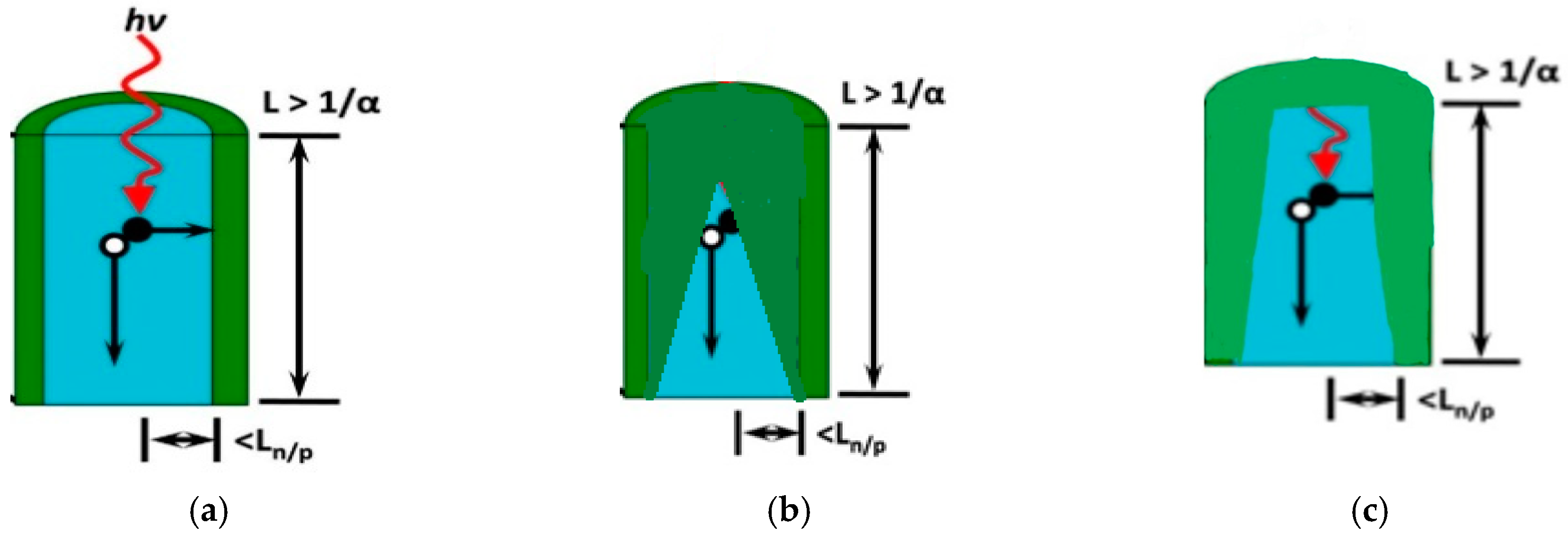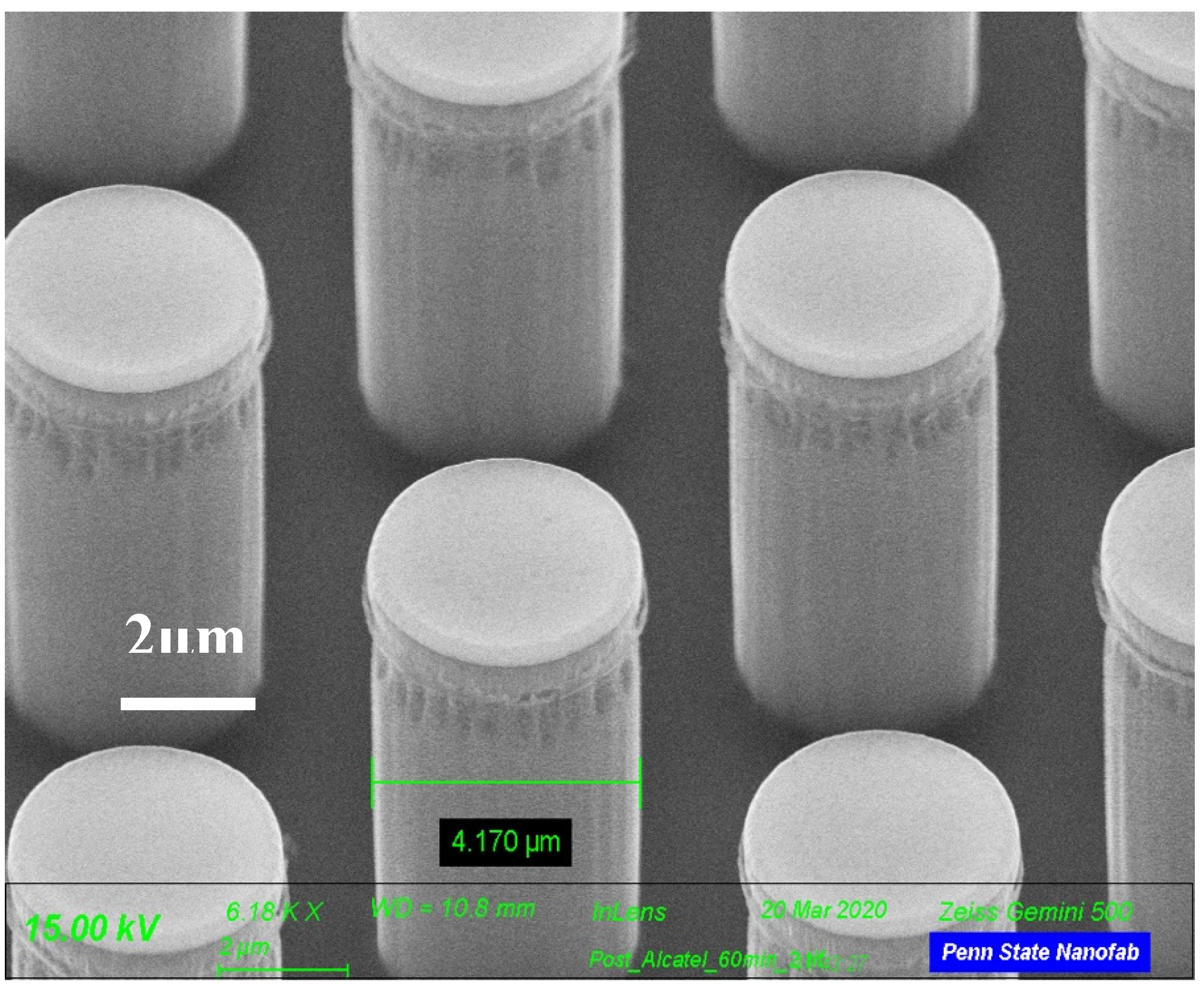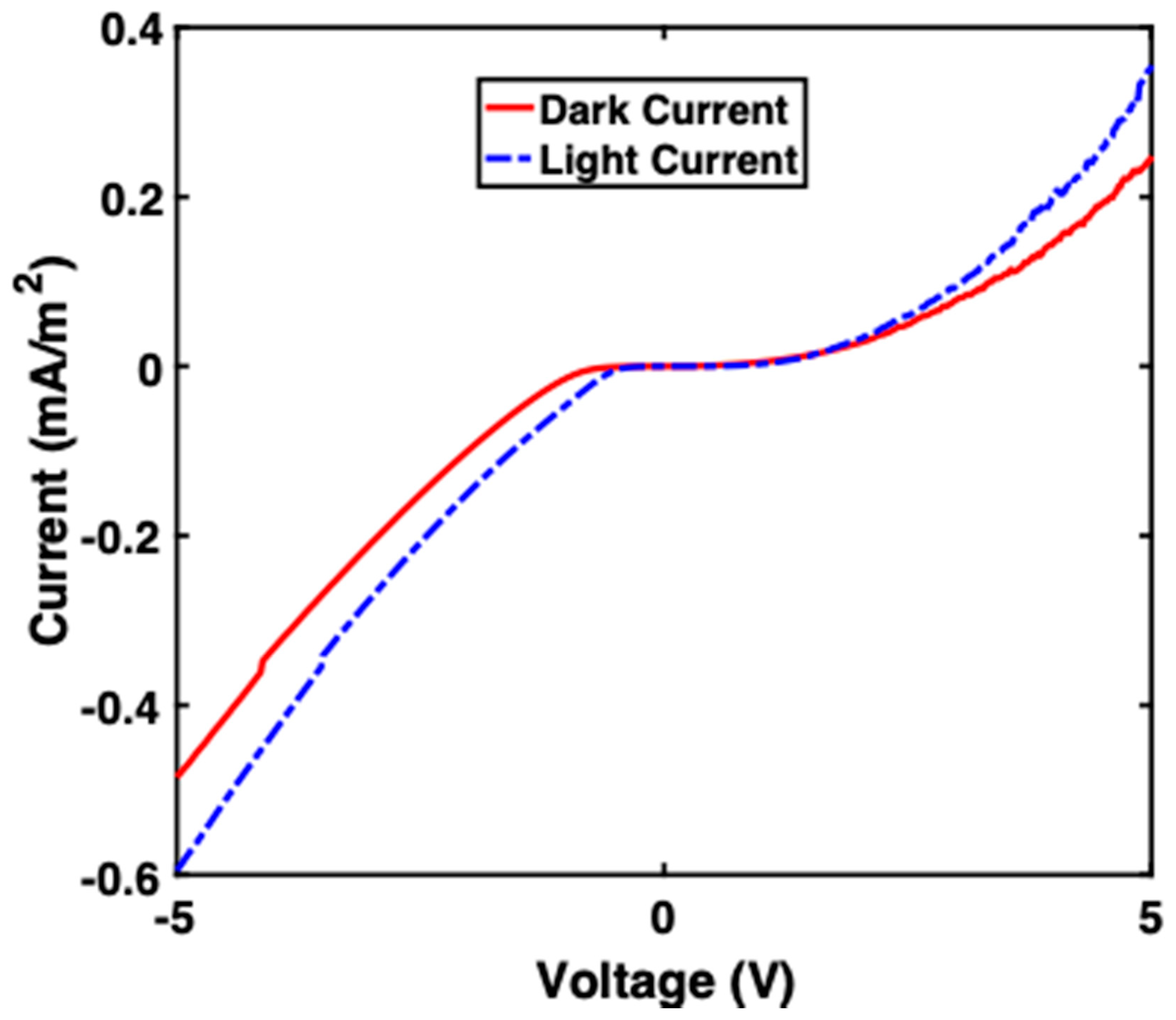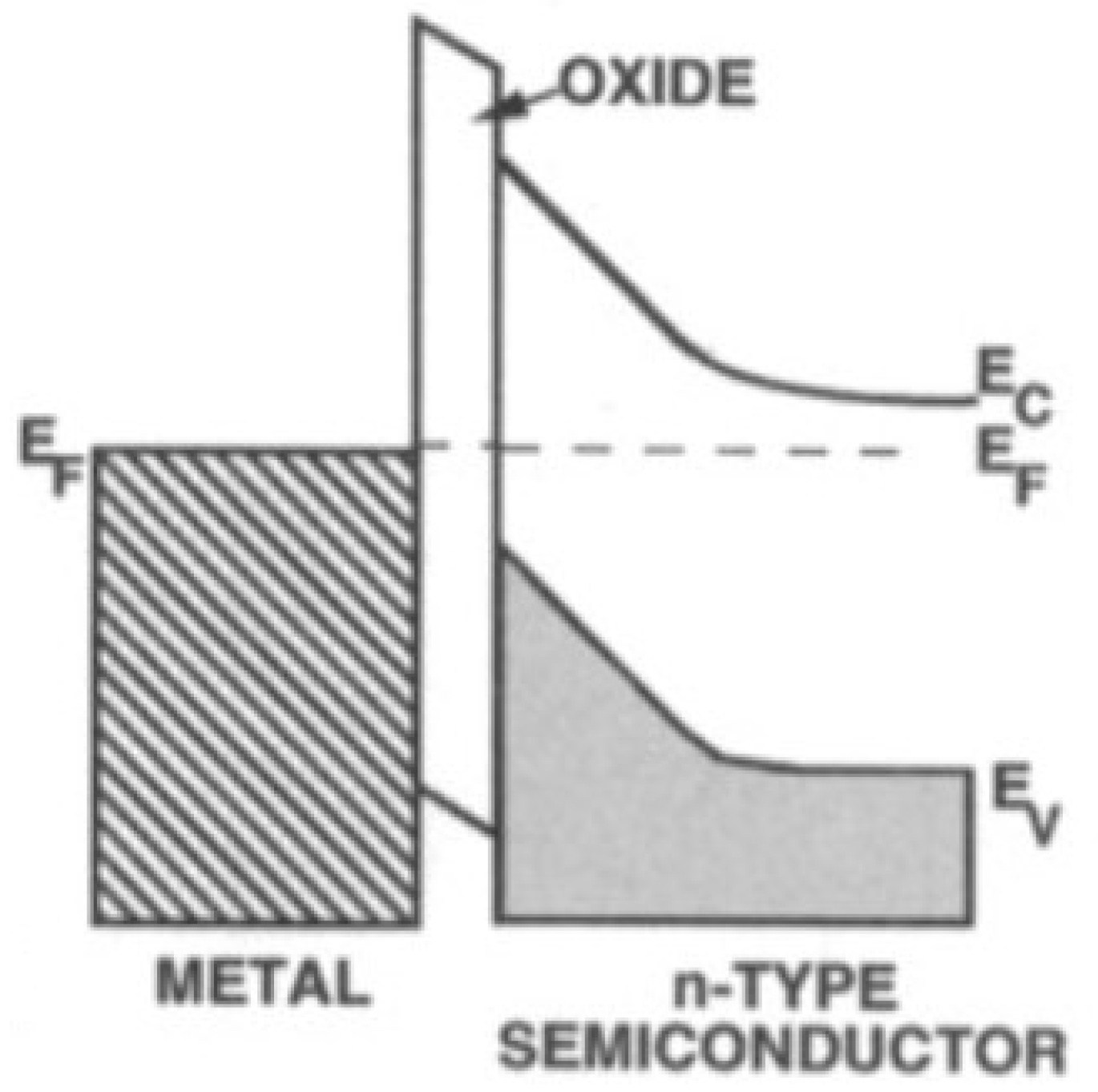Controlling the Doping Depth in Silicon Micropillars
Abstract
:Featured Application
Abstract
1. Introduction
2. Materials and Methods
3. Results
4. Conclusions
Funding
Conflicts of Interest
References
- Hu, L.; Chen, G. Analysis of optical absorption in silicon nanowire arrays for photovoltaic applications. Nano Lett. 2007, 7, 3249–3252. [Google Scholar] [CrossRef]
- Huang, Y.-F.; Chattopadhyay, S.; Jen, Y.-J.; Peng, C.-Y.; Liu, T.-A.; Hsu, Y.-K.; Pan, C.-L.; Lo, H.-C.; Hsu, C.-H.; Chang, Y.-H. Improved broadband and quasi-omnidirectional anti-reflection properties with biomimetic silicon nanostructures. Nat. Nanotechnol. 2007, 2, 770–774. [Google Scholar] [CrossRef] [PubMed]
- Tsakalakos, L.; Balch, J.; Fronheiser, J.; Korevaar, B.A.; Sulima, O.; Rand, J. Silicon nanowire solar cells. Appl. Phys. Lett. 2007, 91, 233117. [Google Scholar] [CrossRef] [Green Version]
- Muskens, O.-L.; Rivas, J.G.; Algra, R.E.; Bakkers, E.P.A.; Lagendijk, A. Design of light scattering in nanowire materials for photovoltaic applications. Nano Lett. 2008, 8, 2638–2642. [Google Scholar] [CrossRef] [PubMed]
- Zhu, J.; Yu, Z.; Burkhard, G.F.; Hsu, C.-M.; Connor, S.T.; Xu, Y.; Wang, Q.; McGehee, M.D.; Fan, S.; Cui, Y. Optical absorption enhancement in amorphous silicon nanowire and nanocone arrays. Nano Lett. 2009, 9, 279–282. [Google Scholar] [CrossRef] [Green Version]
- Kelzenberg, M.D.; Boettcher, S.W.; Petykiewicz, J.A.; Turner-Evans, D.B.; Putnam, M.C.; Warren, E.L.; Spurgeon, J.M.; Briggs, R.M.; Lewis, N.S.; Atwater, H.A. Enhanced absorption and carrier collection in Si wire arrays for photovoltaic applications. Nat. Mater. 2010, 14, 239–244. [Google Scholar] [CrossRef]
- Zhu, J.; Hsu, C.M.; Yu, Z.; Fan, S.; Cui, Y. Nanodome solar cells with efficienct light management and self-cleaning. Nano Lett. 2010, 10, 1979–1984. [Google Scholar] [CrossRef]
- Watson, T.; Amos, A. Comparison of the device physics principles of planar and radial p-n junction nanorod solar cells. J. Appl. Phys. 2005, 97, 114302. [Google Scholar]
- Gunawan, O.; Waung, K.; Fallahazad, B.; Zhang, Y.; Tutuc, E.; Guha, S. High performance wire-array silicon solar cells. Prog. Photovolt. Res. Appl. 2011, 19, 307–3012. [Google Scholar] [CrossRef]
- Sturmberg, B.; Dossou, K.; Botten, L.; Asatryan, A.; Poulton, C.; Sterke, M.; McPhedran, R. Modal analysis of enhanced absorption in silicon nanowire arrays. Opt. Express 2011, 19, A1067–A1081. [Google Scholar] [CrossRef] [Green Version]
- Tsakalakos, L. Nanostructures for photovoltaics. Mater. Sci. Eng. 2008, 62, 175–189. [Google Scholar] [CrossRef]
- Kim, S.; Day, R.; Cahoon, J.; Kempa, T.; Song, K.; Park, H.; Lieber, C. Tuning light absorption in core/shell silicon nanowire photovoltaic devices through morphological design. Nano Lett. 2012, 12, 4971–4976. [Google Scholar] [CrossRef] [PubMed] [Green Version]
- Gharghi, M.; Fathi, E.; Kante, B.; Sivoththaman, S.; Zhang, X. Heterojunction silicon microwire solar cells. Nano Lett. 2012, 12, 6278–6282. [Google Scholar] [CrossRef] [PubMed] [Green Version]
- Kim, J.; Kim, M.; Kim, H.; Song, K.; Lee, E.; Kim, D.-W.; Yun, J.-H.; Choi, B.; Lee, S.; Jeong, C.; et al. Effective light management of three-dimensionally patterned transparent conductive oxide layers. Appl. Phys. Lett. 2012, 101, 143904. [Google Scholar] [CrossRef]
- Krogstrup, P.; Jørgensen, H.I.; Heiss, M.; Demichel, O.; Holm, J.V.; Aagesen, M.; Nygard, J.; Fontcuberta, A. Single-nanowire solar cells beyond the Shockley–Queisser limit. Nat. Photonics 2013, 7, 306–310. [Google Scholar] [CrossRef] [Green Version]
- Koren, E.; Berkovitch, N.; Rosenwaks, Y. Measurement of active dopant distribution and difussion in individual silicon nanowires. Nano Lett. 2010, 10, 1163–1167. [Google Scholar] [CrossRef]
- Perea, D.; Hemesath, E.; Schwallbach, E.; Lensch-Falk, J.; Voorhees, P.; Lauhon, L. Direct measurement of dopant distribution in an individual vapour-liquid-solid nanowirer. Nat. Nanotechnol. 2009, 4, 315–319. [Google Scholar] [CrossRef]
- Priolo, F.; Gregorkiewicz, T.; Galli, M.; Krauss, T.F. Silicon nanostructures for photonics and photovoltaics. Nat. Nanotechnol. 2014, 9, 19–32. [Google Scholar] [CrossRef]
- Jeong, S.; McGehee, M.D.; Cui, Y. All-back-contact ultra-thin silicon nanocone solar cells with 13.7% power conversion efficiency. Nature Commun. 2013, 4, 2950. [Google Scholar] [CrossRef] [Green Version]
- Wallentin, J.; Anttu, N.; Asoli, D.; Huffman, M.; Aberg, I.; Magnusson, M.H.; Siefer, G.; Fuss-Kailuweit, P.; Dimroth, F.; Witzigmann, B.; et al. InP nanowire array solar cells achieving 13.8% efficiency by exceeding the ray optics limit. Science 2013, 339, 1057–1060. [Google Scholar] [CrossRef] [Green Version]
- Gao, J.; Lebedev, O.I.; Turner, S.; Li, Y.F.; Lu, Y.H.; Feng, Y.P.; Boullay, P.; Prellier, W.; van Tendeloo, G.; Wu, T. Phase selection enabled formation of M abrupt axial heterojunctions in branched oxide nanowires. Nano Lett. 2011, 12, 275–280. [Google Scholar] [CrossRef] [PubMed]
- Seo, K.; Yu, Y.; Duane, P.; Zhu, W.; Park, H.; Wober, M.; Crozier, K. Si microwire solar cells: Improved efficiency with a conformal SiO2, layer. Am. Chem. Soc. 2013, 7, 5539–5545. [Google Scholar]
- Elbersen, R.; Tiggelaar, R.; Milbrat, A.; Mul, G.; Gardeniers, H. Controlled doping methods for radial p/n junctions in silicon. Adv. Energy Mater. 2015, 5, 1401745. [Google Scholar] [CrossRef] [Green Version]
- Kayes, B.M.; Filler, M.A.; Henry, M.D.; Maiolo, J.R., III; Kelzenberg, M.D.; Putnam, M.C.; Spurgeon, J.M.; Plass, K.E.; Scherer, A.; Lewis, N.S.; et al. Radial PN junction, wire array solar cells. In Proceedings of the 2008 33rd IEEE Photovoltaic Specialists Conference, San Diego, CA, USA, 11–16 May 2008; pp. 1–5. [Google Scholar]
- Levison, H.; Arnold, W. Handbook of Microlithography, Micromachinging, and Microfabrication; SPIE Press: Bellingham, WA, USA, 1997; pp. 463–465. [Google Scholar]
- Ohring, M. Materrials Science of Thin Films. In Materrials Science of Thin Films; Academic Press: Cambridge, MA, USA, 2001; Chapter 1; ISBN 9780080491783. [Google Scholar]
- Tong, J.; Ma, F.; Hoex, B.; Lennon, A. Tunnel oxides formed by field-induced anodization for silicon solar cell passivation. In Proceedings of the 2018 IEEE 7th World Conference on Photovoltaic Energy Conversion (WCPEC) (A Joint Conference of 45th IEEE PVSC, 28th PVSEC & 34th EU PVSEC), Waikoloa Village, HI, USA, 10–15 June 2018; pp. 2078–2081. [Google Scholar]






© 2020 by the author. Licensee MDPI, Basel, Switzerland. This article is an open access article distributed under the terms and conditions of the Creative Commons Attribution (CC BY) license (http://creativecommons.org/licenses/by/4.0/).
Share and Cite
Kabalan, A. Controlling the Doping Depth in Silicon Micropillars. Appl. Sci. 2020, 10, 4581. https://doi.org/10.3390/app10134581
Kabalan A. Controlling the Doping Depth in Silicon Micropillars. Applied Sciences. 2020; 10(13):4581. https://doi.org/10.3390/app10134581
Chicago/Turabian StyleKabalan, Amal. 2020. "Controlling the Doping Depth in Silicon Micropillars" Applied Sciences 10, no. 13: 4581. https://doi.org/10.3390/app10134581



